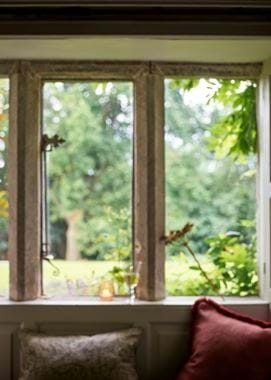The smallest garden
The smallest garden
Window boxes have been making a comeback for a while now, or so they say – we’re not sure they ever really went away. Even though, like hanging baskets, they’ve had a reputation for being a bit twee, they don’t have to be, and they’re a way of making a little extra green space. Whether your garden is a lawn, a terrace, or the place you park your car.
Choosing your container
Window-gardening is about more than just boxes. We’re not saying that the traditional window box doesn’t have a place, but if you’re looking for something smaller, then try pots instead. Our new Sorrel terracotta ones come in three sizes (a ready-made group), are frost-proof, and have matching saucers so there’s no need to worry about spills if your window garden in an indoor one.
We also like lots of little pots simply lined up – you could even collect them together in one of our Ashcroft bread baskets. Long and thin, they’re perfect for windowsills. Consider planting straight into baskets too. We designed Littleton with a zinc liner that protects the rattan from moisture in the soil. Just bear in mind that you’ll have to keep all our baskets out of the rain.
If you’re after a proper window box though, and you’ve got more space, try a trough-style planter like Ovington – it’s made from fibreglass but looks just like an old lead planter. It’s best perched on a balcony or a wide sill.
Filling it
One of the easiest ways to stop your window garden from feeling old-fashioned is to go for simple planting. It goes without saying that the most low-maintenance options are annuals, but they don’t need to be traditional bedding plants. Try an annual grass like the Bunny’s Tail Grass, Lagurus ovatus, if bright colour isn’t for you.
We also love using lots of a single variety. Something like cosmos (choose a smaller one like ‘Dwarf Sensation White’) will look a little like a mini meadow. Now’s the time (in April and May) to sow seeds of cosmos, which will flower from early summer into autumn. For winter and spring, you could do the same thing with snowdrops, daffodils and hellebores.
These ideas are just the starting point, and you can make your window garden as detailed or as pared-back as you like. Sticking to one or two colours and a neutral container will keep things more contemporary.
Taking care
Looking after a window garden is just like any other container. Before you plant, you’ll want to make sure there are drainage holes in the bottom. It seems obvious to say, but worth pointing out as not all containers have them, and it’s not fun to find out afterwards. If yours doesn’t, you can still drill them in yourself – just choose a drill bit that’s right for your container, like one designed for stone or metal.
Getting the compost right is important too, especially if your plants will be in their pots for more than a year. The easiest thing to do is use a pre-made potting compost – we’d always recommend a peat-free one – but if you’ve got an ordinary garden or multi-purpose compost already, that’s fine too. You’ll just want to add something like coir, which keeps hold of water, and grit or sand, which improve drainage – two seemingly opposite things that most plants love. If yours like dryer soil (think Mediterranean plants like lavender and thyme) then leave out the coir and add more sand.
Then it’s just a case of keeping up with the dead-heading and watering. Most plants won’t ask for more.
These images are just some of our favourite window gardens from Instagram. We’d love to see yours, just tag your image with #myneptunegarden.



